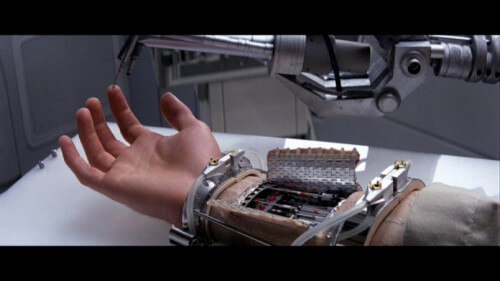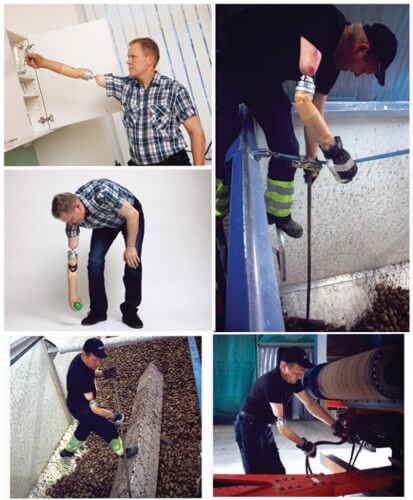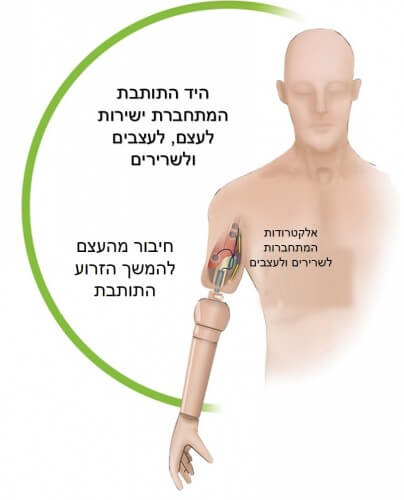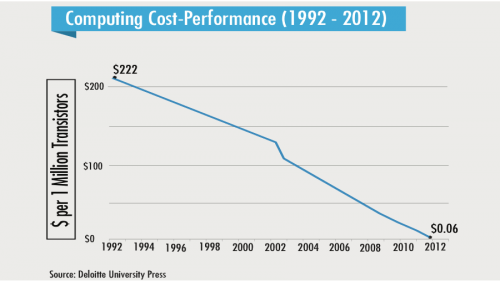In one of the "Star Wars" movies, the hero Luke Skywalker loses his hand in battle. He does not lose hope, and within a few hours he receives a new robotic hand that connects directly to his body and works like a normal hand for everything.


In one of the "Star Wars" movies, the hero Luke Skywalker loses his hand in battle. He does not lose hope, and within a few hours he receives a new robotic hand that connects directly to his body and works like a normal hand for everything.
When the film was released in the seventies, such a prosthetic hand was considered science fiction and nothing more. But now, for the first time, a robotic prosthesis controlled by interfaces that were implanted directly in the bone and connected to the patient's nerves and muscles was demonstrated in the clinic. The fusion between the body and the prosthetic arm provided the patient with functional abilities at a level not seen before, including basic sensing ability. The hand became, in fact, an integral part of the patient's body, and he was able to use it for all his needs, including physical work.
"We used a bone connection to mate a person to a machine stably and over time..." says Max Ortiz Catalan, who led the research at Chalmers University. "The artificial arm is connected directly to the skeleton and thus gains mechanical stability. The human's biological control system, i.e. the nerves and muscles, is also connected to the machine's control system through neuromuscular electrodes. Thus an intimate union between the body and the machine is created; Between biology and mechatronics."

For the patient who participated in the study, this is a significant improvement compared to the prosthesis he used until now. His arm was already amputated more than ten years ago, and his previous prosthesis received instructions from electrodes laid on the skin. These electrodes had to deal with a particularly difficult task: collect electrical messages from the muscles and nerves under the skin, and deduce from these how the patient wants the hand to move. This approach had limited success, and as a result the previous prosthetic hand tended to make constant mistakes.
The new prosthetic arm is connected directly to the body's control system, and is therefore able to perform tasks with a much higher level of precision and finesse. The success can be seen in the fact that the patient works as a truck driver in northern Sweden, and since the operation he has been able to handle all possible situations: he is able to tie the load to the truck and operate the relevant machines, and even perform delicate operations, such as arranging egg cartons and tying skates to his children's feet.
Various actions that the patient performs with the new prosthetic hand. You can click on the image to enlarge. Source: Science Translational Medicine.
.
The patient is currently also the first in the world to gain an artificial sense of touch through the prosthesis over time. Since the implant is connected directly to the nerves and bone, it is able to transmit signals in the opposite direction as well - from the prosthetic hand to the brain. Similar attempts have already been made in the past with more primitive prostheses, but only for short periods of almost a month. In the current experiment, the patient gained a basic 'sense of touch' through the prosthetic hand for a period of 11 months, until the study was published last week. The electrodes sent electrical signals to his nerves, which were translated in his mind as a slight "tickling" sensation in the places where the researchers pressed the hand with a pen. The researchers intend to continue perfecting the hand's ability to transmit information to the nerves, just like a normal biological hand - and even better.
The researchers intend to treat more disabled people with the new technology later this year, but some wonder how many amputees will be able to afford such sophisticated prostheses. This question is especially important in a world where landmines cause more than 26,000 amputations per year, mainly in developing countries. However, the costs of robotic prostheses are expected to decrease along with the constant decrease in the costs of computing components. The decrease in component costs is what has resulted in the fact that in the last twenty years the cost of a computer with a million transistors has dropped from 222 dollars to only 6 cents. It doesn't seem likely to stop in the near future (in fact, the drop in price is only getting faster), and the costs of the prostheses will also drop along with it. The cost of installation and connection to the body may also decrease in the coming decades through the use of advanced robots to perform the surgery.

All of these indicate that the prosthetic hand that connects to the body and nerves is only a symptom of what is to come: a world where the biological and the artificial are integrated into each other almost continuously, and implants will be available to most people. There are indeed many challenges to be solved on the way to this future, but we have already taken the first steps. And even if we get tired halfway through, we may discover that our legs are interchangeable.
- The original article in the journal Science Translational Medicine
- The press release from Chalmers University
More of the topic in Hayadan:

3 תגובות
You seem a little out of touch with reality
Following your resume, I scanned here the defense works written by a reliable institution, for example on science and technology in Iran. With the exception of cyber which is populist (without disparaging the field) i.e. in fashion today, this is the second topic they refer to. Regarding science and technology in Iran, Iranian scientists are ignored in the US. One of them won the Fields Medal this year, and the other is a leading researcher in quantum physics. In my field of electricity and electronics, I see quite a few Iranian scientists. Therefore, the claim that there is no science in Iran seems limited to me. It is enough to watch CNN, SKY, BBC every day and see that their basic premise is that the future world will be Muslim and in the USA when looking for a leading scientist in a certain field, they are currently looking for a Muslim "and hiding" the Jews in the media. Therefore, at the same time as researching the future based on inventions and science, as I did in your book, in my opinion, research into futurism should be done based on the clear demographic change that is occurring today. The trend is mono-religious and among the three religions, the most militant wins, and the one that appeals to a lower common denominator. The third world rose from its bed and threatens to swallow up the first world quite successfully. The world's tolerance for an occupation on a huge scale in Arab territory is much higher than its tolerance for an attack on Gaza. If no genocide had been committed there at all, the return would have been accepted with understanding. 5.4 billion NIS was donated to Gaza this week, while much less to Iraq and Syria. Britain has more time to discuss the situation of the Palestinians than the situation in Iran, Iraq and thus in all of Europe. There will be those who claim that I am on the wrong site, but futurism in my opinion will go where the demographic direction will lead it and not according to the scientific direction.